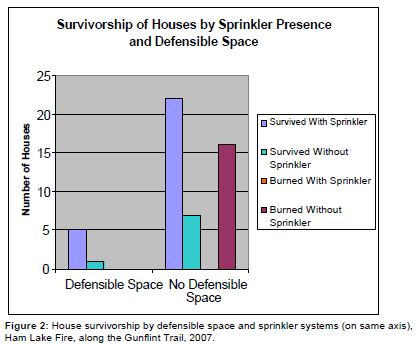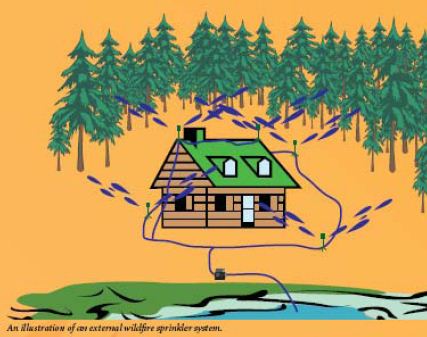The University of Minnesota has prepared a report that examines the effectiveness of outdoor sprinkler systems to protect homes during wildfires. Following the 1999 wind event, or “the blowdown”, that instantly created thousands of acres of dead and down vegetation, FEMA provided grants that paid for the installation of sprinkler systems at private residences. In fact in one area, the Gunflint Trail community, 130 systems were paid for by FEMA, and there were an estimated 300 total in the area.
The report can be found here; a large .pdf file will download when you click on the link.
Here is an excerpt from the report.
The Ham Lake wildfire experience with the sprinkler systems as one component of wildfire preparedness demonstrated that the systems, when properly installed and maintained, can be extremely effective in protecting not only the built structure but also the trees and vegetation within the sprinkler area. Of the threatened structures on the Gunflint Trail that burned in the Seagull Lake and Saganaga Lake areas, only one had a working sprinkler. Of the threatened structures that survived, 72% had working sprinklers. All but one structure with a working sprinkler system survived the fire.
The report also has a handy guide that provides information about the installation and maintenance of sprinkler systems. Here is an illustration from the brochure.


